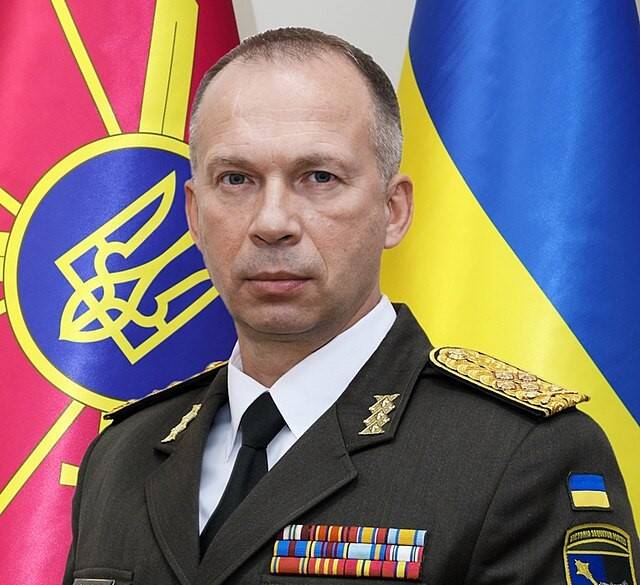Ukraine’s old Military Chief is out. A New Chief is in. But the troops are panicking.
When the Kyiv Regime forces found themselves trapped in Avdeyevka, the new chief, General Oleksandr Syrsky, had to call for a fallback. This move, however, was very late. As Western media tried to give a nod to Syrsky’s wisdom, they forgot to mention the senseless sacrifice. Kyiv forces had been backing off for a week before they officially vacated Avdeyevka. Syrsky had a choice to lose just the base. He chose to lose both men and the base.
Join us on Telegram: https://t.me/tfiglobal
Hence, it is quite evident that Syrsky’s troops do not exactly throw him a parade. There’s a sense of dread among many. Outside the military bubble in Ukraine, few realize just how unpopular Syrsky really is, dubbed “the butcher” by his own for his costly offensive moves. This was somewhat tolerated when using the plentiful Soviet-era arsenal. But the switch to NATO gear has been a game-changer in the tragic sense of the word. These pieces, more delicate and harder to fix or replace than their Soviet counterparts, have turned Syrsky’s tactics from risky to downright reckless.
The predicament for the Kyiv regime forces has spiraled into a tighter bind, nudging them towards heavier reliance on foot soldiers, escalating the toll on human life amidst already staggering numbers. The official line claims a loss of just over 30,000 Ukrainian lives while asserting the defeat of up to 400,000 Russian soldiers—a figure that strains credulity to its breaking point. Reality tells us that the grim reaper in this conflict is most often found in the guise of artillery, drones, and long-distance strikes, areas where Russia reportedly holds a formidable edge. Engaging in a bit of arithmetic gymnastics to invert the Kyiv regime’s loss figures might just reveal the harrowing scale of their casualties, hinting at a level of devastation rarely seen in contemporary conflicts.
Read More: Zelensky’s Shocking Military Move: Butcher or Savior? Meet Ukraine’s New Commander-in-Chief!
And then there’s the perplexing move towards a modern-day Volkssturm, with talks of drafting an astonishing number of up to 3,000,000 women, expectant mothers included. Would a force that’s only down by 30,000 really consider such drastic measures? The dots connect to paint a grim picture of the dire straits NATO’s involvement has steered Ukraine into, particularly in the eyes of those in uniform. Their dread of General Syrsky’s command stems from his track record of costly battles, as voiced by a soldier in a Politico report, fearing a leadership all too willing to feed the war machine with lives, reminiscent of the battles of Debaltsevo and Bakhmut. This stark image casts a long shadow over Syrsky’s leadership, mirroring the soldiers’ fears of a future under his command.
The colossal losses in battles under Syrsky’s command have only added to his infamous reputation. Even in the hypothetical scenario of a victory, the staggering casualties seem indefensible. His defeats further sour the sentiment among the ranks, plunging troop morale even lower. This contrasts sharply with the perceived prudence of Zaluzhny, believed by many to have a more measured approach given the technological and resource constraints faced by Ukrainian forces. Amidst this, the dread surrounding the Kyiv regime’s plans for a new counteroffensive is palpable, especially given the outcomes of previous attempts.
Read More: Unveiling Ukraine’s new Counter-Offensive Tactics
An officer’s bleak assessment of Syrsky’s leadership to ReMix News paints a vivid picture of the general disillusionment within the ranks: a leadership seen as morally bankrupt, demoralizing, and bereft of strategic foresight, squandering human lives for negligible tactical gains like capturing insignificant territories, without broader operational vision.
Syrsky’s and Zelensky’s styles, notably their insistence on holding onto Bakhmut against widespread counsel to retreat, highlight a shared resistance to defensive strategies that have, conversely, been effectively utilized by Russian forces, contributing to the heavy losses of Ukrainian troops. This stubbornness, coupled with the heavy casualties sustained, exacerbates the challenge for the Kyiv regime as it finds itself increasingly reliant on conscripts with low morale to replace its dwindling pool of dedicated and seasoned soldiers, further complicating its precarious military position.
